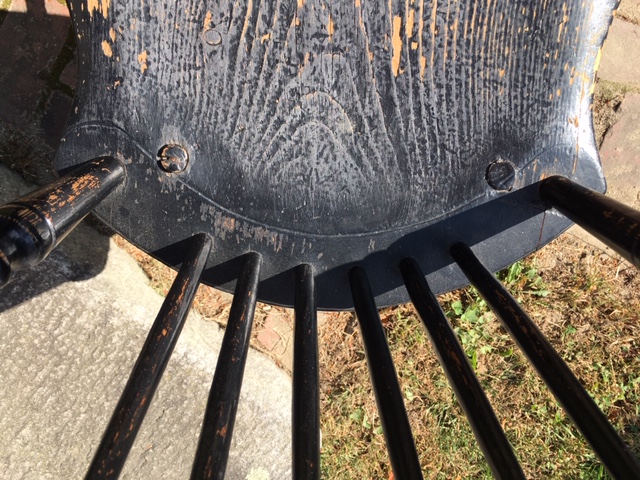A Tale of Two Windsors
And not members of the British royal family! Instead we will examine two windsor chairs, both by New England craftsmen. Windsor chairs come in various forms—the sack back, the hoop back, the fan-back and the bow-back being particularly popular examples. Some were designed as side chairs, others as armchairs the most ambitious of which included a built-in writing and storage component. The Windsor chair was first developed in England often as outdoor furniture placed on the grounds of the British country house. In order to harmoniously blend with the setting these chairs were painted green. This style was introduced into the British North American colonies in the 1740s, initially in Philadelphia. However, the style soon became ubiquitous and especially popular in New England with major centers of production in Boston, Rhode Island, and Connecticut.
The unique feature of the Windsor chair is the fact that its structure is centered on its saddle seat. All elements including the legs, back and spindles are tapered at the ends where they are inserted into holes bored into or often through the seat. This construction method was not only economical but resulted in a light weight chair that was notable for its strength and stability. As a result, Windsor chairs were made in vast numbers. Not only were they popular in the home but were equally suitable for public spaces such as taverns, courthouses, and other public buildings.
Our first Windsor is one of four bow-back side chairs which today are placed around a tavern table.

This set has traditionally been attributed to the Boston chair makers, James E. Seaver (1787-1829) in partnership with Nathaniel Frost. This partnership only lasted from 1799 until 1803. The flared legs are shaped in the so-called “bamboo” style. The bow-back would have been made in ash or hickory, carefully bent and dried to its current shape. The spindles, usually seven in number, provide support. The pine seat is shaped for comfort whereas the maple legs were designed for strength.
Our second Windsor, one of a pair in the fan-back style, now graces a Federal period parlor.

In its attention to detail this chair is more sophisticated than the bow-back discussed above. Its legs are boldly turned as are its back supports. Its saddle seat is more pronounced and its crest rail is nicely curved and flared. This chair has the unusual feature of only having six spindles with the result that the sitter’s backbone will nestle between spindles rather than being pressed by the central one. This chair’s original black painted surface shows signs of considerable wear yet the chair is as prim and strong as the day it was made. As seen in the detail of the seat the chair maker incised a curving line into the seat in front of and behind the stiles and spindles.
As the detail shows, this line is incised directly across the top of the rear right leg as its projects through the seat.

There is circumstantial evidence that these chairs were likely made about 1800 in what is now Maine.
George Keyes, LCHA Collections Committee

 Newsletter
Newsletter Join LCHA
Join LCHA Donate Now
Donate Now